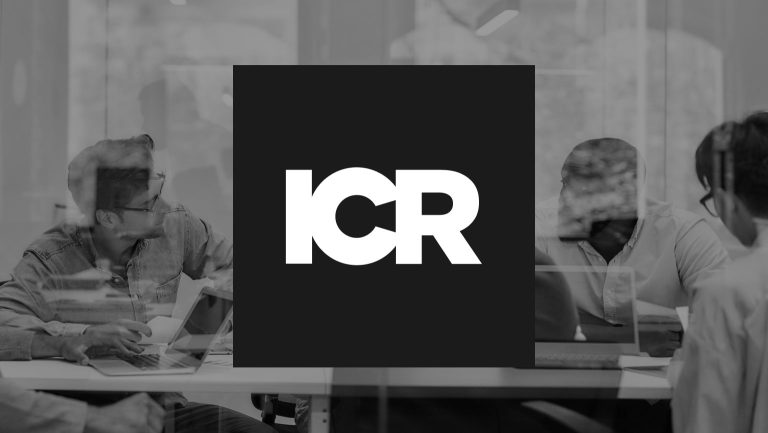COVID-19 has upended life as we know it. Most businesses have experienced modest to severe effects while many shuttered operations entirely.
This will ultimately change as states and communities around the country lift shelter-in-place orders and allow businesses to consider reopening after coronavirus. This won’t be perfect of course, and many questions will remain. But one thing is clear: First impressions will be lasting. How different stakeholders first experience the process of normalization will impact their confidence and comfort level. For example, investors will be focused on balance sheets, liquidity and the sustainability of the enterprise. Customers will be overly cautious, most likely developing new purchasing patterns. Employees may prefer to remain at home rather than returning to an environment that potentially carries a health hazard. And finally, vendor supply chains may operate differently with everyone opining on what the new normal might look like, and for how long.
What’s clear is companies need to thoroughly anticipate the issues they will face and carefully plan their communications. In an effort to support this effort, we have provided a series of recommendations and resources for company leaders to communicate during this period of transition.
People and Health First
All actions and communications need to demonstrate a commitment to keeping customers, team members and anyone who interacts with the business safe and healthy. Not only is this a moral and ethical obligation, it is fundamentally essential to instilling confidence for people to re-engage in the activities necessary for business success: showing up to work, shopping, visiting restaurants, attending professional events, visiting physical locations and more.
Companies need to expressly state the steps they are taking to ensure safe operations, including: regular cleaning, use of PPE, potential temperature or other testing and social distancing plans. CDC and state-specific guidelines provide recommendations that each organization should adapt to their specific environment.
Companies should also have clear plans in place should they experience cases of COVID in the workplace after reopening.
By addressing the fundamental human concern for health and safety, we can hopefully allow people to focus their full attention on moving the business forward.
Detailed Plans for Reopening After Coronavirus
There’s no question that every business should have an excruciatingly detailed plan for reopening after coronavirus. These plans must cover the full range of operational and communications issues and involve representatives from all company disciplines: operation, HR, IT, communications, and legal. Plans will vary from company to company, with each accounting for a wide range of circumstances including alignment with each state’s individual timeline and rules for reopening. Some critical components include:
- Health and safety steps
- Employee training
- Employee communication
- Operational procedures
- Notification procedures (for alerting management to issues and concerns)
Key to all communications will be letting employees know what has changed — office policies and procedures, travel policies, client/customer/vendor interaction — and regularly updating them on what will likely be a gradual process to normalization.
The Lear Corporation has done a significant public service by developing a comprehensive plan for its operations that it has posted online for use by others. It has also invited feedback and input in an open-source fashion to improve the plan and make it relevant to all organizations.
Reopening Communications
How companies inform their stakeholders about reopening plans is as important as the execution of those plans. It will take time to re-acclimate to the new normal and communication should begin well in advance to manage expectations and prepare people for what to expect. Don’t wait until you have all the answers to begin communicating — share the process you are going through and what variables will influence the ultimate plan and decision-making.
Once the plan is finalized, companies need to combine direct and mass communication to inform external constituents of the news and the specifics as it relates to the plan. This may include rules on social distancing, recommended PPE, different hours of operation, and a wide range of issues for different businesses. Companies should properly train customer call personnel, create effective in-facility signage, and have plans for engaging with the media both reactively and proactively about reopening plans.
Actively Monitor and Solicit Feedback
It has rarely been so important to keep a constant finger on the pulse of your organization and your relationship with stakeholders. The situation on the ground will certainly change — hopefully for the better — but perhaps not in a linear fashion. There will be setbacks, both real and perceived, as everyone is on edge wondering what waits on the other side of quarantine.
Companies should establish and implement a range of formal and informal mechanisms to monitor opinion and sentiment, including:
- Periodic employee pulse surveys
- Regular CEO or manager-driven check-ins via in-person or virtual meetings
- HR-led outreach to teams and team members
- Customer and guest surveys via email, social media channels or even traditional polling research
- Active monitoring and analysis of sentiment on social media
- Regular check-ins with top customers and other business partners
These tools should be used to identify emerging issues and inform company decisions on operational steps and communications. All plans need to anticipate new developments and management teams need to prepare to adapt based on changes and feedback.
Ensure Financial Flexibility
Businesses need sufficient capital to operate, and the implications of widespread economic shutdown has left many companies in a precarious position. There are a wide range of options to enhance liquidity and raise capital, many of which companies have already taken advantage of, including cutting costs and capital expenditures, reducing or suspending dividends, drawing down revolvers, tapping the capital markets or applying for government loans. While each of these steps may be necessary to ensure financial viability, they will each have longer term implications and therefore require dedicated messaging and communication so the information is presented in the most appropriate and effective way possible. The public scrutiny around government assistance programs like the Paycheck Protection Program (PPP) underscores the importance of assessing the reputational impact of any initiative.
Given the uncertain business environment and even more uncertain recovery, many companies have taken steps to ensure that they have adequate liquidity. With the sharp decline in stock prices, most public companies are facing a rise in their cost of capital. Therefore, it is critical to get independent advice on the best available options. In addition to debt alternatives, there are a wide range of equity and equity-linked products that should be evaluated by management teams. They include:
- Marketed equity offerings
- Confidentially marketed public offerings
- Private Placements (PIPEs)
- At the Market Offerings (ATMs)
- Convertible Debt/Preferred offerings
- Rights offerings
The volatility in the markets has also suspended IPO activity for the most part. As a result, many companies heading down the IPO path have been faced with the need to explore alternative capital raising strategies. The options available to later-stage private companies include additional private rounds and/or combining with a SPAC (special purpose acquisition company). With the public markets being the ultimate goal for many of the private companies, it is crucial to seek independent views on the impact that various financing alternatives will have on future public market aspirations.
Adjust to the New Investor Landscape
The rapid economic downturn led to an unprecedented drop in stock prices, dramatically altering the landscape for company interaction with the investment community. Investors immediately shifted their focus from traditional metrics of growth rates and earnings, to cash flow and liquidity. Most investment funds are looking to trim losses, but also to generate alpha through investing in undervalued assets as well as best-in-class companies.
Management and investor relations teams need to fully understand the new landscape: How has ownership of their shares changed and what are the investment filters of their current and potential ownership groups? Communications should highlight the current state of the business, specific actions that have been taken in response to the pandemic and the rebuilding process. This includes employee safety and liquidity first and foremost. Beyond those key issues, companies must articulate the plan to reopen. This may not include revenue or earnings guidance at this point, but it should include a commitment to transparency and helping shareholders quantify the current environment as best they can. Additionally, it is important for management teams to communicate the insights gained from these challenging times and how they can best position their business in light of the changed environment.
Through these unprecedented times, while the primary focus has been on safety, it has also been very important to over-communicate with the investment community. This will not change even as we get back to a more normal work situation (i.e., back to the office). Large gatherings will likely be discouraged, and individuals will likely be anxious to attend even small group meetings. And certainly, big cities like New York and Boston — homes to probably the largest number of analysts and investors — will most certainly be slower than other cities in returning to normal.
As a result, virtual investor roadshows will continue to be the most useful tool for most management teams to communicate with their analysts and investors. This will slowly change to incorporate a mix of in person and virtual meetings for a period of time. But until there is a sense of normalcy companies should be more detailed about their story during their quarterly earnings calls, keep PowerPoint presentations up to date and on the IR website, create corporate video to better tell the story and utilize appropriate social media sites like LinkedIn or Facebook to keep others up to date on progress. Creativity and innovation will be the winners as issuers compete for capital.
In addition to guiding management on day-to-day operations, Boards of Directors must review corporate defenses. They should pay special attention to how such corporate actions are being viewed by shareholders, particularly index funds. Taking care to communicate plans clearly can allow companies to provide adequate protections without running afoul of shareholder guidelines. . As these investors are closely scrutinizing a company’s capital allocation priorities and discrete adjustments made to executive compensation programs in light of the COVID-19 crisis, each Board should canvass shareholder sentiments on such actions prior to the 2021 proxy season.
As investors increasingly focus on ESG — including the emphasis on human capital — companies should be conscious of their current activities in light of the significant employee dislocation that has occurred as well as modifications to supply chain and vendor risk management to the extent relevant
(Next) Crisis Planning
As unwelcome as it may be to anticipate further challenges and disruptions ahead, the coronavirus pandemic serves as powerful reminder to expect the unexpected. And the only way to effectively respond to a crisis is to have anticipated it (or something sufficiently similar) in advance and preemptively assessed potential response options and actions. Conducting a vulnerability assessment and subsequent scenario planning process can be completed in a matter of weeks and requires limited direct engagement from senior management. But the outcome will not only provide the organization with a pre-determined set of actions and communications to use in response to a negative event, but the process of analyzing and preparing for such events can often enable organizations to take actions or changes policies or practices that actually lessen the likelihood of, or the impact from a given event.
Furthermore, there is now a range of very predictable secondary effects from the COIVD-19 situation that companies should prepare for. What if a series of coronavirus cases occur at company facility, or vendor or supplier that impacts its supply chain? What if new labor rules, travel restrictions or trade relations further affect a company’s ability to operate?
Companies that anticipate the unexpected are best positioned to respond and can sometimes even gain competitive advantages.
For advice or assistance on developing your reopening plan or managing the communications implications brought on by the COVID-19 pandemic, please do not hesitate to get in touch.



